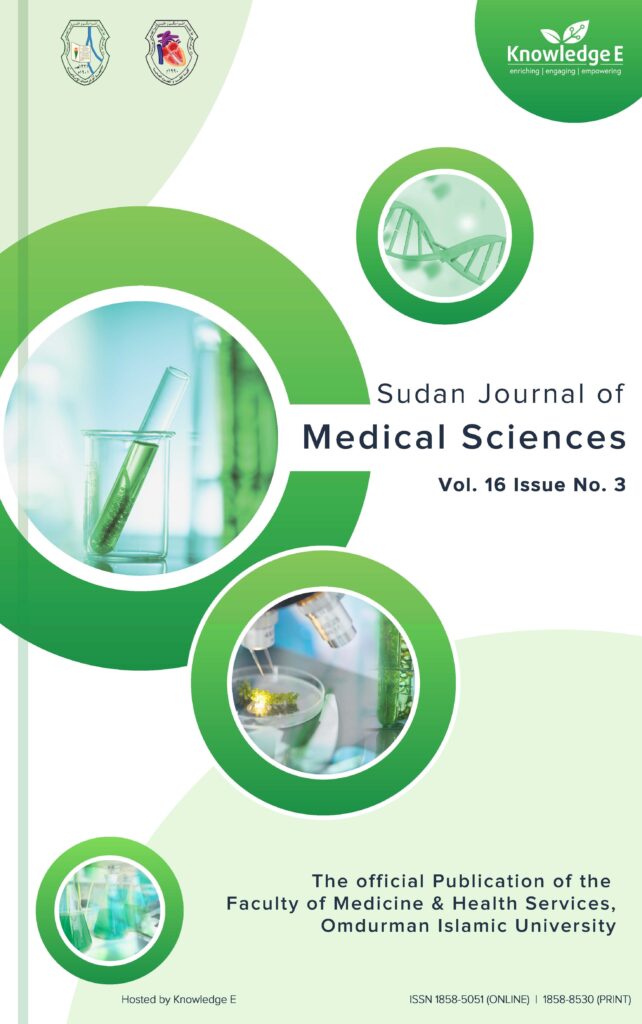
Sudan Journal of Medical Sciences
ISSN: 1858-5051
High-impact research on the latest developments in medicine and healthcare across MENA and Africa
Acquired Traumatic Diaphragmatic Hernia with Delayed Presentation in a Child
Published date:Mar 31 2019
Journal Title: Sudan Journal of Medical Sciences
Issue title: Sudan JMS: Volume 14 (2019), Issue No. 1
Pages:9 - 14
Authors:
Abstract:
A congenital diaphragmatic hernia occurs because of embryologic defects in the diaphragm. Most patients with congenital diaphragmatic hernias present early rather than late in life, however, adults may present with a congenital hernia that was undetected during childhood. Acquired diaphragmatic hernias result from all types
of trauma with blunt forces accounting for the majority [1]. The author reports a case of acquired diaphragmatic hernia in a three-year-old boy with a prolonged history of recurrent attacks of vomiting and abdominal pain associated with cough. After taking in to account the full history and investigation, it was proved to be a case of acquired diaphragmatic hernia.
References:
[1] El-Gohary, Y., Schuster, I., Scriven, R. J., et al. (2014). Iatrogenic diaphragmatic hernia in infants: potentially catastrophic when overlooked. Journal of Pediatric Surgery Case Reports, vol. 2, no. 11, pp. 515–518.
[2] Rattan, K. N., Magu, S., and Agrawal, K. (2005). Traumatic diaphragmatic herniation. Indian Journal of Paediatrics, vol. November, no. 72, pp. 985–986.
[3] West, K., Weber, T., and Grosfeld, J. (1981). Traumatic diaphragmatic hernia in childhood. Journal of Paediatric Surgery, vol. 3, no. 16, pp. 392–395.
[4] Kumar, K. and Kumar, M. G. (2013). Delayed presentation in traumatic diaphragmatic hernia. Indian Paediatrics, vol. 50, pp. 709–710.